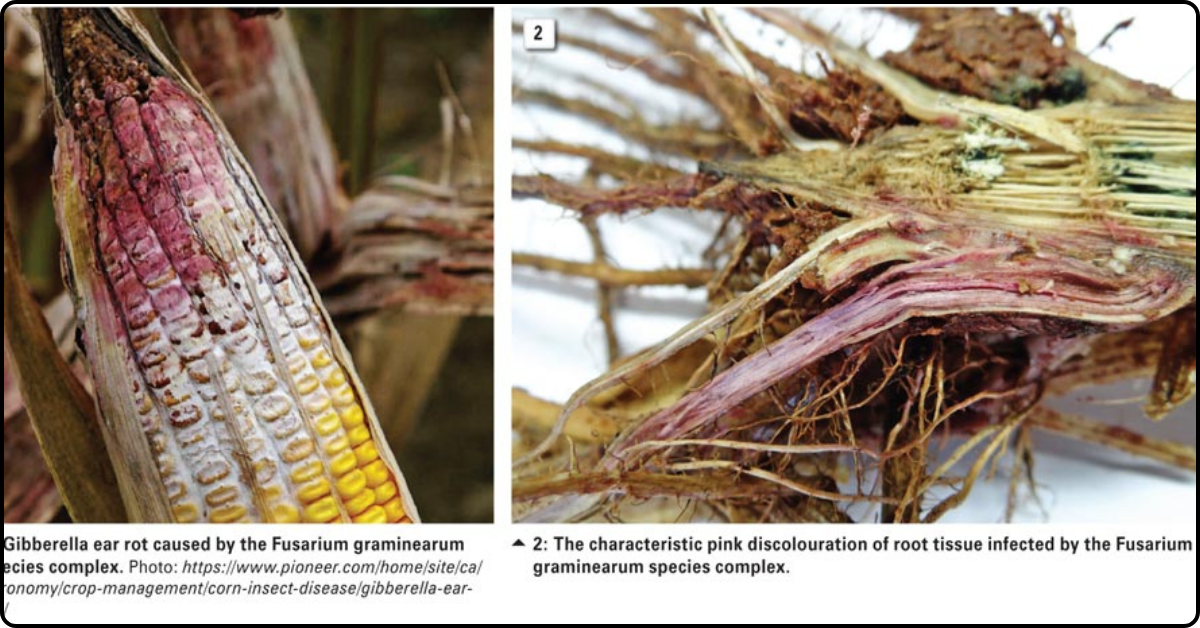Learn everything about Fusarium graminearum, the major fungal pathogen behind Fusarium Head Blight (FHB). Discover causes, symptoms, life cycle, and top prevention methods to protect your crops.
Fusarium graminearum: Causes, Symptoms, and Effective Management in Crops
Fusarium graminearum, also known as Gibberella zeae, is one of the most destructive fungal pathogens affecting cereal crops worldwide, particularly wheat, barley, and maize. It is the primary cause of Fusarium Head Blight (FHB), a disease that not only reduces crop yield but also contaminates grains with harmful mycotoxins like deoxynivalenol (DON).
This article offers a comprehensive overview of Fusarium graminearum, exploring its origin, life cycle, symptoms, impact on agriculture, and effective management practices for farmers and agronomists.
What is Fusarium graminearum?
Fusarium graminearum is a soilborne and seedborne fungal pathogen belonging to the Ascomycota phylum. It thrives in humid conditions and attacks grains during flowering stages. It infects plant heads, causing bleaching and poor grain fill.
The fungus is particularly notorious for producing mycotoxins, especially DON (vomitoxin), which poses health risks to humans and livestock. Because of its widespread nature and devastating economic impact, Fusarium graminearum is one of the most heavily researched fungal pathogens in the agricultural world.
Also Read: Erin Patterson: The Australian Mushroom Poning Case That Shocked the Nation
Causes and Conditions Favoring Infection
The development of Fusarium graminearum is strongly influenced by environmental conditions. Key factors include:
-
Warm and humid weather, especially during flowering stages.
-
Crop residue left on the soil surface, especially from corn and wheat.
-
Continuous cereal cropping without rotation.
-
High soil moisture levels or excessive rainfall.
-
Use of susceptible crop varieties.
Spores from the fungus can spread via wind or rain splash, infecting healthy plants and rapidly colonizing entire fields under the right conditions.
Life Cycle of Fusarium graminearum
Understanding the life cycle of Fusarium graminearum is critical to managing it effectively:
-
Survival Phase:
The fungus survives winter in infected plant debris as perithecia (fruiting bodies). -
Spore Release:
In spring, ascospores are released into the air and dispersed to new hosts by wind or rain. -
Infection:
Spores land on the flowering heads of cereal crops. The fungus enters through open florets and begins colonizing tissue. -
Colonization and Mycotoxin Production:
Within days, the fungus spreads inside the plant, producing mycotoxins and disrupting grain development. -
Reproduction and Spread:
Infected plants produce new spores, restarting the cycle.
Symptoms of Fusarium graminearum Infection
The symptoms of Fusarium graminearum depend on the host plant, stage of infection, and environmental conditions. Key indicators include:
In Wheat and Barley:
-
Bleached spikelets or entire heads while lower leaves remain green.
-
Pinkish or salmon-colored mold on infected parts.
-
Shriveled or lightweight kernels, often called “tombstone kernels.”
-
Discoloration in grains, leading to reduced grain quality.
In Maize:
-
Ear rot, with pink or red mold growing between kernels.
-
Soft, water-soaked ears with poor kernel development.
These symptoms not only reduce yield but render the grain unsafe for human and animal consumption due to mycotoxin contamination.
Economic Impact of Fusarium graminearum
The presence of Fusarium graminearum has significant financial implications for farmers, food processors, and exporters:
-
Yield Loss: Severe infections can cause up to 50% yield reduction in wheat and barley.
-
Quality Reduction: Contaminated grains are rejected or sold at a lower price.
-
Export Restrictions: Countries with strict food safety laws limit imports of mycotoxin-contaminated grains.
-
Livestock Health Issues: Feeding animals with DON-contaminated feed can lead to vomiting, poor weight gain, and reproductive issues.
The combined cost of crop loss and quality reduction runs into billions of dollars globally each year.
Economic Impact of Fusarium graminearum
The presence of Fusarium graminearum has significant financial implications for farmers, food processors, and exporters:
-
Yield Loss: Severe infections can cause up to 50% yield reduction in wheat and barley.
-
Quality Reduction: Contaminated grains are rejected or sold at a lower price.
-
Export Restrictions: Countries with strict food safety laws limit imports of mycotoxin-contaminated grains.
-
Livestock Health Issues: Feeding animals with DON-contaminated feed can lead to vomiting, poor weight gain, and reproductive issues.
The combined cost of crop loss and quality reduction runs into billions of dollars globally each year.
Also Read: Toyota Fortuner & Legender 48V Hybrid Variants Launched in India Starting at ₹44.72 Lakh
Future Research and Genetic Control
Advanced research is focusing on:
-
CRISPR gene editing to develop highly resistant crop strains.
-
Biological control agents such as Trichoderma spp. to outcompete Fusarium in the soil.
-
RNA interference (RNAi) technology to silence the genes responsible for mycotoxin production.
Such tools offer hope for long-term solutions against Fusarium graminearum in sustainable agriculture.
Fusarium graminearum remains one of the most serious threats to cereal production globally. Its ability to reduce crop yield, degrade grain quality, and produce dangerous mycotoxins necessitates a multi-layered management approach.
